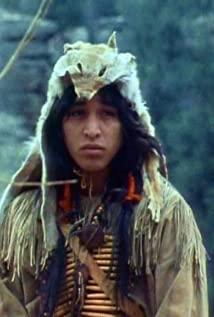From the level of "faithfulness to the original", the seventh-third edition has done very well. The story begins with flashbacks, and the movie begins with the trial of the heroine Hester, and some of the Indians only appear as a background. The priest, as in the novel, was very cowardly, even weak. Daughter Pearl has more scenes in the movie. She seems to be a very supernatural bird who runs through and even leads the development of the story. At the end of the story, the priest fell to the ground and died after plucking up the courage to "confess" his actions. This is also the plot set by the author of the novel.
Relatively speaking, the changes in the 95th edition are so much larger that it becomes the most filthy place. Its story unfolds in a positive way, burying the contradiction between the settlers and the natives at the beginning, and narrating the content of the Indians many times in the later plot changes. The priest here becomes a handsome and masculine man, no longer too cowardly. The movie explained in detail that Hester was guided by a little red bird, and when he saw the priest swimming naked in the river, he gradually fell in love, which strengthened the theme of nature and love, and rendered a very positive background for that kind of fornication. color. If you really want to find something that is closer to the original than the 73rd edition, it might be the plot of Hester giving birth to her daughter in prison, but this one is an extra touch I think. The priest finally gave a generous speech, and was rescued by the Indians at the last moment of his life, instead of being killed suddenly as in the original book. The love between Hester and the pastor was finally understood, and they settled far away and lived happily ever after.
In comparison, the 73rd edition reveals the rigor of many Germans, but it is indeed a little restrained. But considering the environment nearly 40 years ago, it is indeed not as relaxed as the current film and television adaptation. At that time, the film also had more narrative tasks, and more "literal translation" rather than "free translation". The 95th edition expresses more American-style film language. For example, the little red bird mentioned above first appeared in leading Hester to see the priest naked swimming, and then appeared in the scene of their love. It is the incarnation of their daughter Mingzhuer. In fact, in the original work, the author has written the elf and the bird together many times. The movie can capture this detail and strengthen it with a unique language, which is also a very wonderful interpretation. (By the way, many times when evaluating the role of Pearl in the original book, people will feel that this supernatural little thing is a little distorted from a modern perspective, but in Hawthorne's era, such characters also appeared in large numbers in the Ming and Qing Dynasties of China. novel.) The happy ending of the film, possibly the most American, feels a little corny.
Judging from the effect of the picture, the West German version from 40 years ago can't see the obsolete history at all. The color and composition of the picture are very beautiful, and the performance of the actors is just right, which fully expresses the psychology of the characters. The American version does not show many such advantages, and the impressive picture is not even as good as the former, which seems to be lacking for a "blockbuster" of more than two hours. The two heroines, played by Austrian Senta Berger and American movie star Demi Moore, are restrained and straightforward, and both have excellent performances. I myself prefer the former's performance, but when I searched for some of Berg's photos later, I found more of her appearance as an old lady in recent years, and I couldn't help but lament the years. In this world, there are probably only some good works that can be immortal, such as Hawthorne's novel one hundred and sixty years ago and these two movies from decades ago.
View more about The Scarlet Letter reviews











